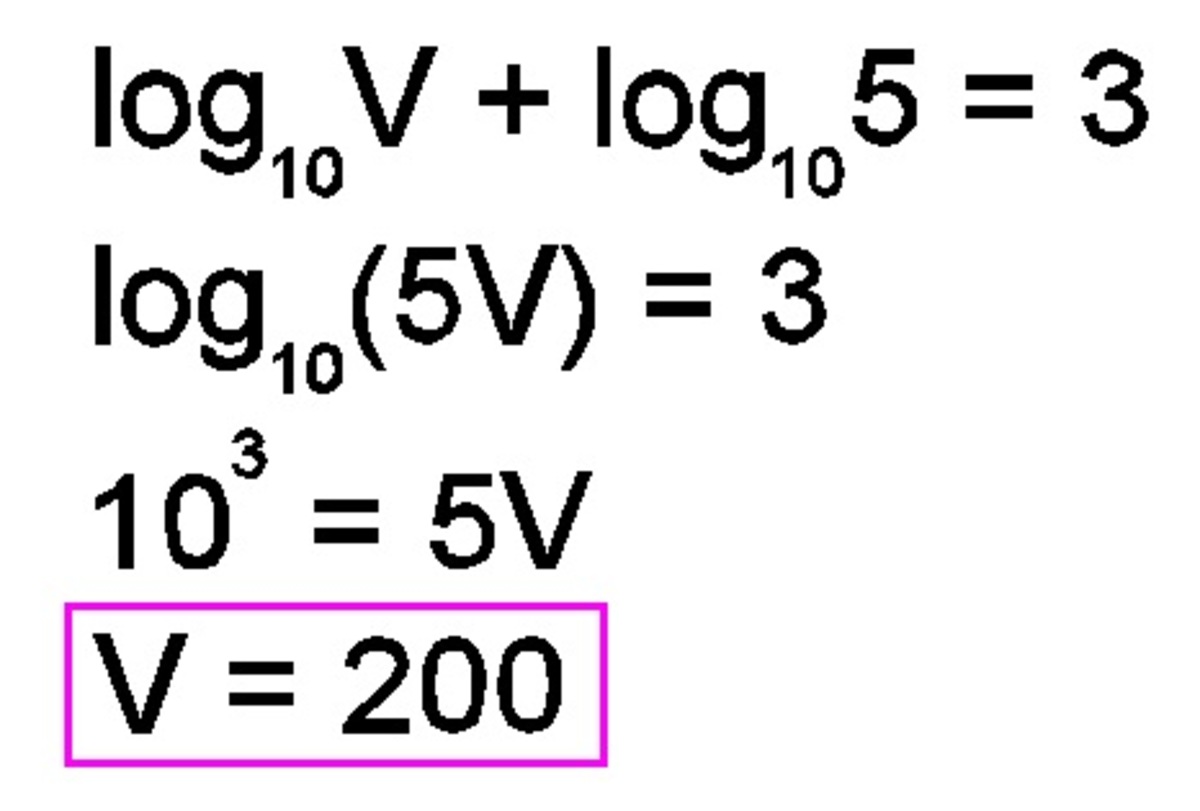Unknown Problem
Solve the following equation for v :
lo g v + lo g 5 = 3 .
Note: lo g is the common logarithm, i.e., base 1 0 .
The answer is 200.
This section requires Javascript.
You are seeing this because something didn't load right. We suggest you, (a) try
refreshing the page, (b) enabling javascript if it is disabled on your browser and,
finally, (c)
loading the
non-javascript version of this page
. We're sorry about the hassle.
4 solutions
Look at the given equation:
1.log v+log 5=3 Use the Product Property to combine the logarithms. log 5 v=3 Rewrite this as an exponential equation and solve for v.
2.log 5 v = 3 5 v = 103 5 v = 1,000 v = 200 Divide both sides by 5
3.The solution is valid only if the original equation makes sense when v is 200. In other words, the expression inside the logarithm in the original equation must be positive. log v+log 5 = 3 log 200+log 5 = 3 Plug in the solution, v=200 The expressions inside the logarithms are 5 and 200, which are positive. This means the logarithms in the original equation are well defined. So, v=200 is a valid solution.
lo g 1 0 v + lo g 1 0 5 = 1+1+1
lo g 1 0 v + lo g 1 0 5 = lo g 1 0 1 0 + lo g 1 0 1 0 + lo g 1 0 1 0 (since lo g 1 0 1 0 = 1)
lo g 1 0 ( 5 v ) = lo g 1 0 1 0 0 0 (since log a + log b = log (ab) )
5v =1000
v=200
